Key takeaways:
- Drone mapping in Zanzibar enhances land surveying, environmental monitoring, and tourism development while highlighting the need for ethical considerations in the process.
- Field mapping significantly improves farming efficiency and environmental conservation by uncovering soil variations and hidden resources.
- Proper preparation, including equipment checks and weather assessments, is crucial for successful drone mapping sessions.
- Collaboration with local experts enriches mapping projects and emphasizes the importance of teamwork in navigating complex challenges.
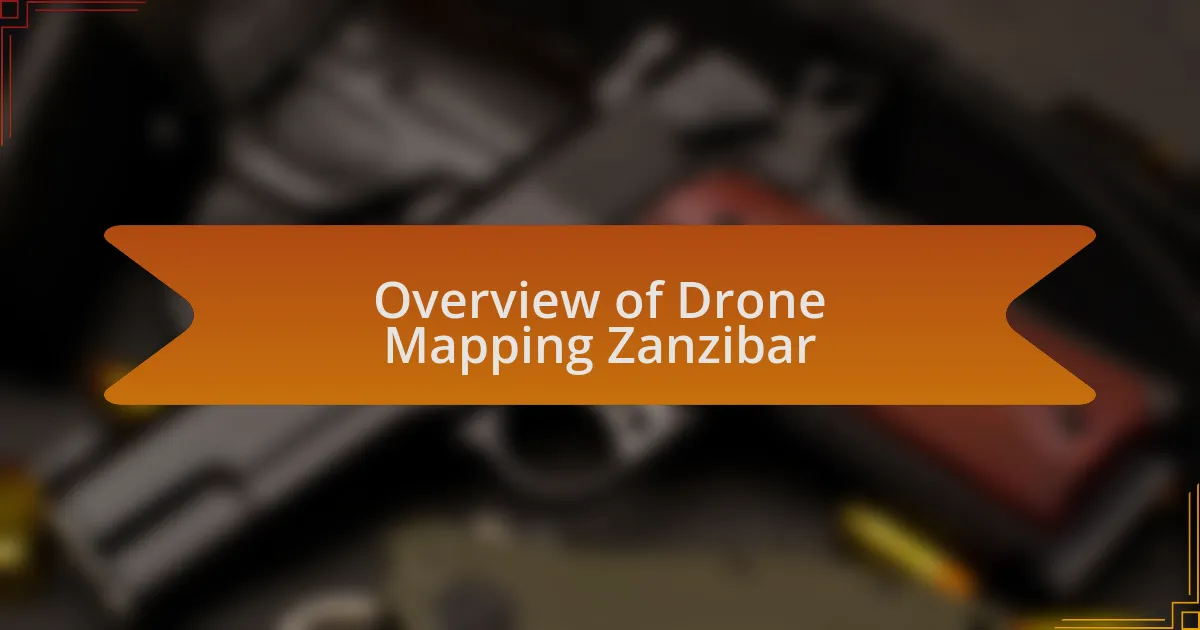
Overview of Drone Mapping Zanzibar
Drone mapping in Zanzibar presents an exciting intersection of technology and natural beauty. Imagine soaring above lush landscapes, capturing intricate details that are often missed at ground level. This method allows for precision in surveying land, making it invaluable for both environmental monitoring and tourism development.
During one of my drone mapping sessions, I felt a profound connection with the scenery below; the vivid colors of the ocean contrasted beautifully with the emerald greens of the islands. It’s hard not to wonder how this technology could reshape our understanding of the region. With each flight, the potential for mapping cultural heritage sites, managing natural resources, and enhancing agricultural practices became increasingly apparent to me.
The possibilities are endless, but they also come with responsibility. As you think about getting involved in drone mapping Zanzibar, consider the ethical implications of your work. Are we honoring the land and its stories? This question drives me to approach each project thoughtfully, deeply appreciating the rich tapestry of history and environment that Zanzibar offers.
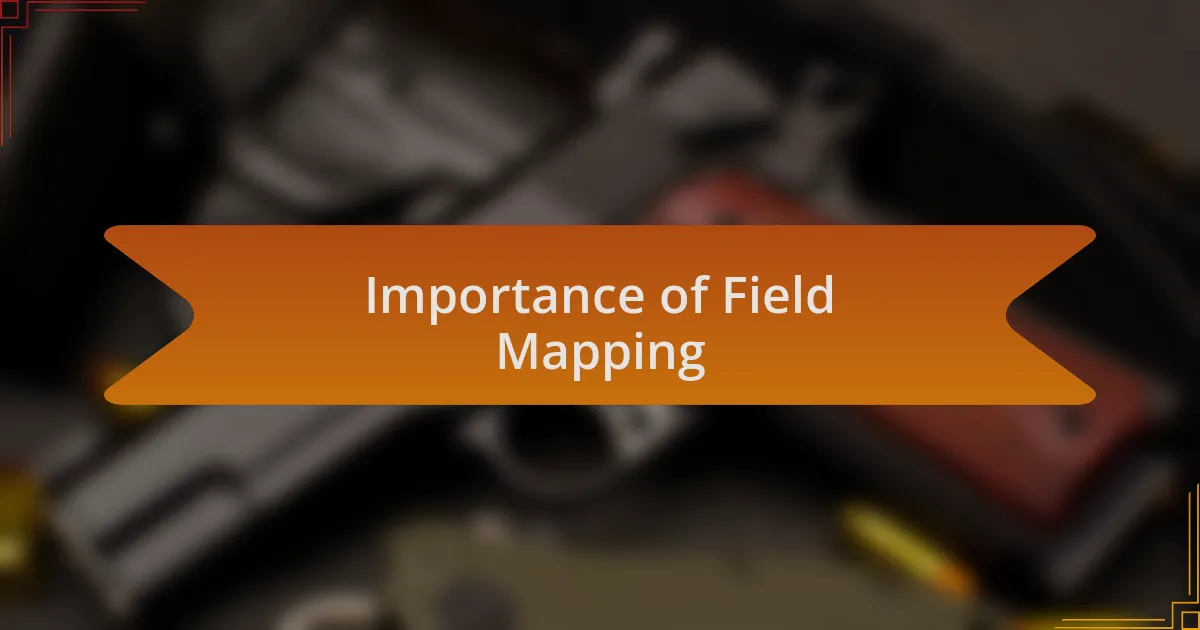
Importance of Field Mapping
Field mapping is instrumental in understanding and managing diverse landscapes, especially in a region like Zanzibar. I recall a project where meticulous mapping revealed soil variations that significantly impacted farming efficiency. Without these insights, decisions could have been made based on assumptions, ultimately affecting crop yields and farmer livelihoods negatively.
Accurate field mapping also facilitates better planning for environmental conservation efforts. For instance, during one mapping session, discovering hidden water sources allowed local authorities to implement sustainable irrigation practices. I couldn’t help but feel a sense of responsibility—how many other hidden gems or issues are out there waiting to be uncovered?
Moreover, field mapping fosters communication and collaboration among stakeholders. I’ve seen how shared maps can spark conversations among farmers, conservationists, and government officials, bridging gaps and aligning goals. Isn’t it powerful to consider how one tool can unite people for a common purpose? These assembled narratives can tell the story of a community’s landscape, enriching our collective knowledge and stewardship of these precious resources.
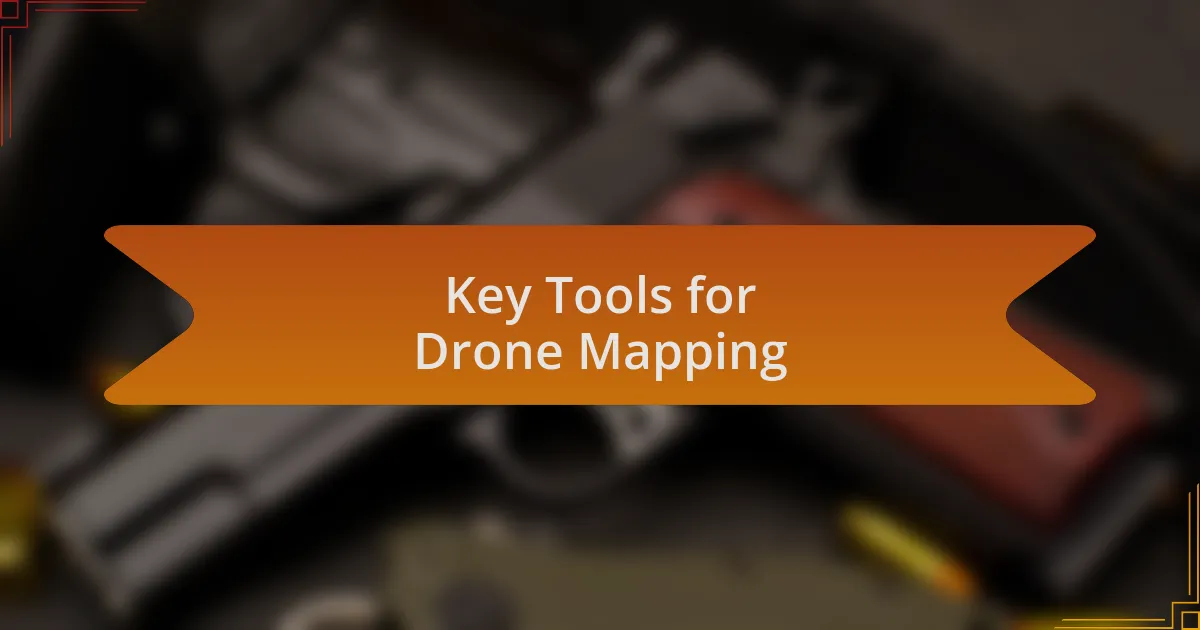
Key Tools for Drone Mapping
When it comes to drone mapping, the right tools can make all the difference. I’ve found that having a high-quality drone equipped with a reliable camera is essential. For example, during a recent project, my DJI Phantom 4 RTK not only captured incredible aerial images but also provided accurate georeferencing, which drastically improved the mapping accuracy. Isn’t it fascinating how technology can transform our approach to understanding landscapes?
Another key tool that I highly recommend is a robust mapping software. I often use Pix4D, which allows me to process images efficiently and generate detailed 3D models. Finding software that fits your specific needs is crucial; I remember struggling with various options until I settled on this one that aligned perfectly with my mapping style. The ability to analyze data in real-time truly enhances decision-making capabilities—don’t you think it’s empowering to visualize complex data?
Lastly, don’t underestimate the power of good planning tools, such as mission planning apps. These have revolutionized my workflow by allowing me to predefine flight paths and ensure comprehensive coverage of my mapping area. I distinctly recall a mapping session in an intricate mangrove ecosystem, where my planning app helped me navigate through tight spaces without missing key areas. How much simpler it is when you have the right preparation?
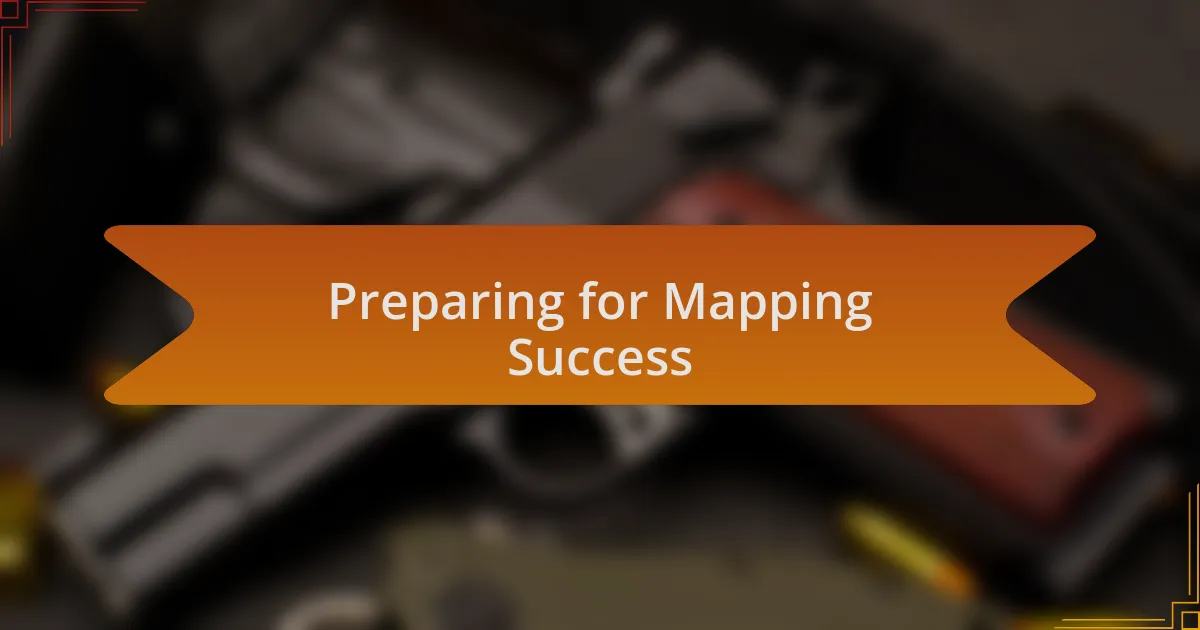
Preparing for Mapping Success
When I prepare for mapping success, I always start with a thorough reconnaissance of the area. This initial step helps me understand the terrain and identify any potential obstacles, such as trees or buildings, that could affect my drone’s flight path. I remember one time, while scouting a beautiful coastal area, spotting a sandbank that could have easily led to trouble. How often do we overlook the importance of a good first look?
Next, I ensure that my batteries and equipment are all fully charged and ready to go. There’s nothing quite as disheartening as being out in the field, eager to start, only to find out that my drone is running low on power. I can still picture the feeling of frustration when I had to postpone mapping just because I didn’t double-check my gear the night before. Isn’t it interesting how small oversights can derail an entire project?
Lastly, I always factor in the weather conditions. Checking forecasts and staying updated on any changes can often mean the difference between a triumphant mapping day and a frustrating setback. I often reflect on that one rainy day when I decided to wait it out because the skies looked ominous—I ended up with some of my best aerial shots when the sun finally broke through! How does your patience play a role in your mapping adventures?
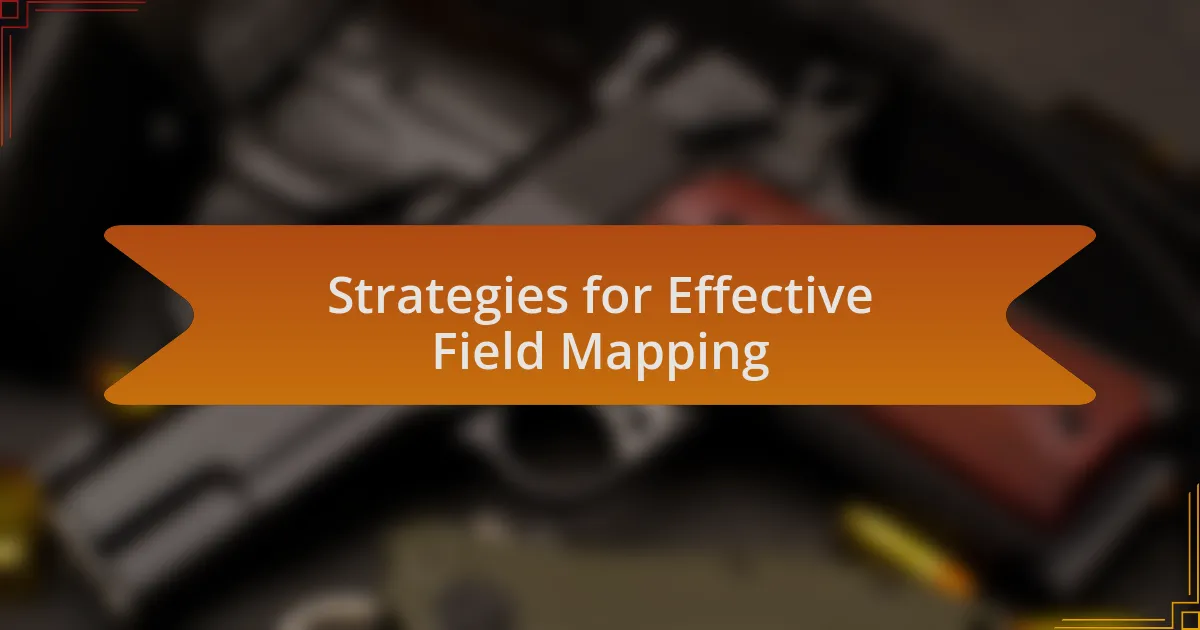
Strategies for Effective Field Mapping
When it comes to effective field mapping, I’ve learned that creating a detailed flight plan is key. By outlining your intended data collection routes, you can maximize coverage and ensure no area is overlooked. I vividly recall a project where, after flying a pattern I thought was comprehensive, I discovered a section I missed entirely. Isn’t it amazing how a little pre-planning can save you from unnecessary repeat flights?
Another important strategy is to continuously assess battery life and signal strength throughout the flight. I remember one instance where my drone unexpectedly lost connection mid-mapping. I felt a rush of panic as I watched it hover precariously before regaining control. This taught me that keeping an eye on these variables during the flight is essential to prevent heart-stopping moments.
Finally, I make it a habit to review the data right after each flight. Immediate analysis not only confirms the quality of the imagery gathered but also highlights any issues that need addressing in subsequent flights. I’ve found that taking the time to do a quick review has often saved me from extensive rework later on. How often do we rush on without checking the quality of the very data we’re collecting?
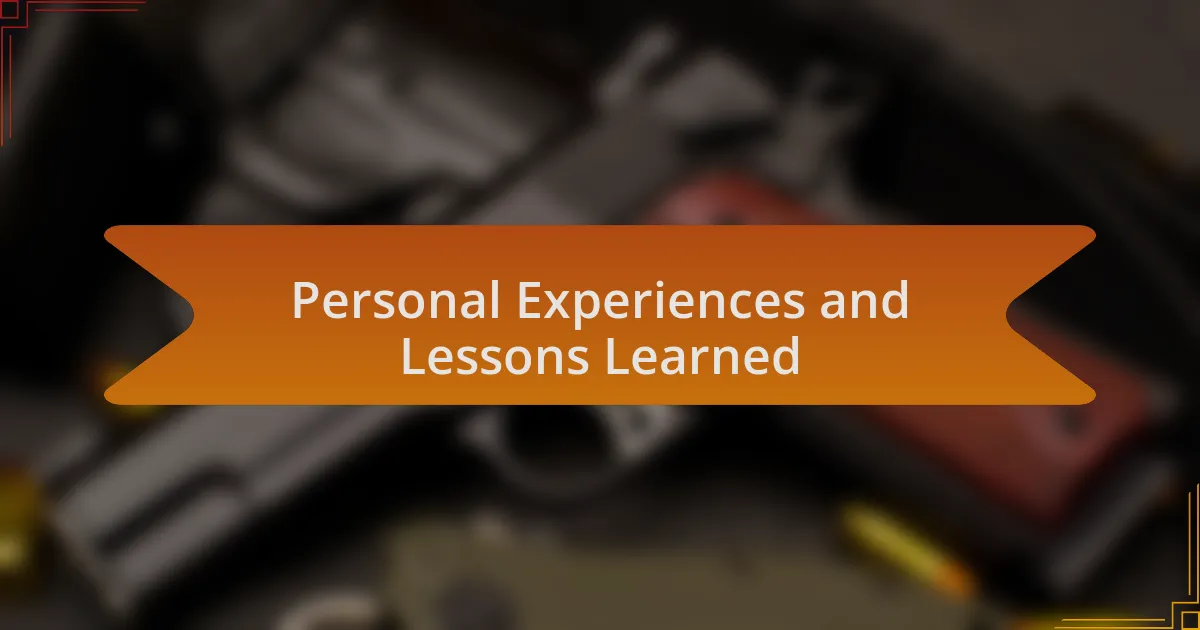
Personal Experiences and Lessons Learned
Reflecting on my early days in drone mapping, I remember a project that turned into an unexpected learning experience. I didn’t account for local weather changes, and a sudden gust caught my drone mid-flight, forcing me to abandon the mission. That shaky moment taught me a valuable lesson about checking weather conditions before heading out—no detail is too small when it comes to successful field mapping.
One memorable field mapping session took place in an area with dense foliage. I had mapped similar terrains before and felt confident, but I underestimated how difficult it would be to capture clear images. It was frustrating to realize that even the most confident planning can fall short, reminding me of the importance of adaptability. How often do we think we have it all figured out, only to have nature throw a curveball?
I also learned the power of collaboration while working on a community project. Partnering with local experts not only enriched my understanding of the landscape, but it also fostered a sense of trust and agility in our planning process. Their insights changed how I approached mapping, emphasizing the importance of teamwork in tackling complex projects. Have you ever considered how sharing experiences with others could elevate your own work?
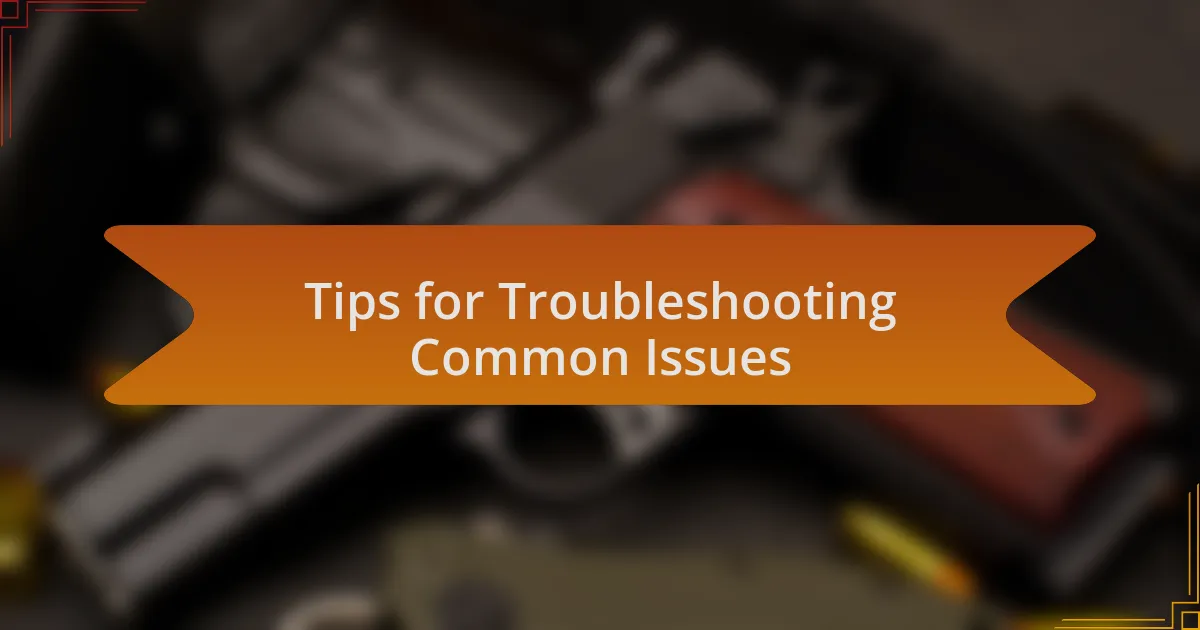
Tips for Troubleshooting Common Issues
When I encountered connectivity issues mid-flight, it felt like time stopped. I remember frantically adjusting the settings and recalibrating my drone, wondering if I’d lose the entire day’s work. Now, I always ensure that I test the connection before launching, and I recommend conducting a quick pre-flight checklist; it really is a lifesaver.
Battery life can be another tricky hurdle. I once ran out of power while just shy of completing a crucial segment of a mapping project, and it was frustrating to say the least. Now, I always plan for extra battery capacity and keep spares handy. Have you considered how much time and resources you could salvage by being proactive with your batteries?
Sometimes, issues with software arise unexpectedly, and it can feel overwhelming. I’ve faced moments where the processing took much longer than anticipated, leaving me anxious about deadlines. I’ve learned to keep my software updated and to familiarize myself with troubleshooting guides—it truly helps mitigate those stressful situations when things don’t go as planned. Have you thought about how a little preparation can turn potential chaos into manageable challenges?